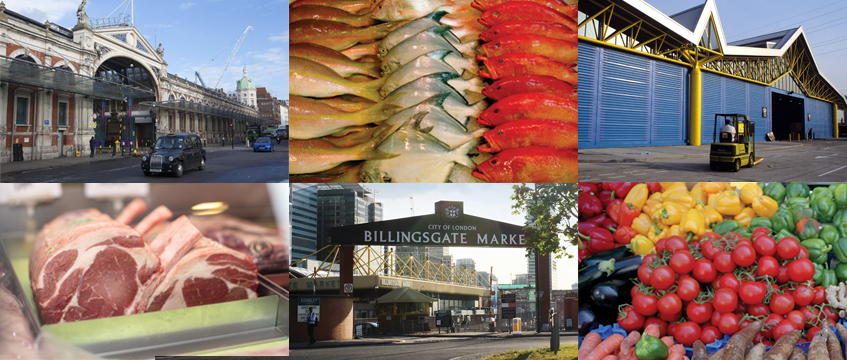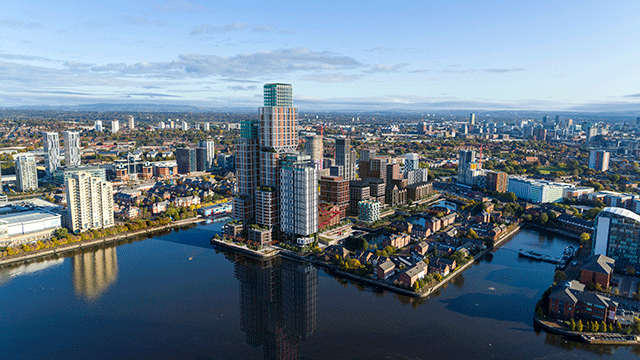The City of London Corporation has said it plans to consolidate Billingsgate, New Spitalfields and Smithfield markets under one roof and has appointed Lambert Smith Hampton to undertake the search for a 100 acre site to relocate them to.
The move follows a strategic review carried out by the City into how to secure the continued operational success of the markets and the proposal to consolidate the markets has been agreed in principle, subject to a feasibility study and consultation.
An external consultation will start shortly with programme proposals being explored with the traders, their customers and other tenants to develop and maximise operational requirements and benefits, as well as the Greater London Authority and the London boroughs where the existing sites are located, and other boroughs with relevant interests.
The City will also consult MPs and relevant interested parties such a Historic England, the Victorian Society, and the Billingsgate Consultative Committee.
As part of its search for a new site for the markets the City has said it would also consider proposals of a small number of sites adding up to 100 acres in close proximity that could be operated together.
Once a site has been nominated, a business case, along with consultation outcomes, will be considered across a number of City Corporation committees for final approval.
A private bill will be submitted to parliament in due course as parliamentary legislation will be required to agree any relocation.
The new site would also allow for related uses such as an apprenticeship school for fishmongers and butchers, the City said.
“Billingsgate, Smithfield and New Spitalfields are three national treasures. They equally deserve a fantastic new location to call home that’s well connected and has prime facilities on offer for the many thousands who flock week in week out.
“We’re working very closely with the City of London Corporation to manage this exciting project including deploying our specialist industrial team to find and secure a perfect site for many years to come,” Ezra Nahome, chief executive at Lambert Smith Hampton, said.
The Markets
Billingsgate
Billingsgate Fish Market relocated to its current 13-acre site on the Isle of Dogs in Poplar, East London, from Billingsgate Wharf close to Lower Thames Street in 1982.
It comprises a trading hall with 98 stands and 30 shops, a 1,500-tonne freezer store, an ice making plant and 14 lock-up shops used by processors, catering suppliers and merchants dealing primarily in trade sundries, non-perishables, poultry and potatoes.
Around 40 merchants trade every day from the 115,238 sq ft market selling on average 25,000 tonnes of seafood products each year.
City of London and Tower Hamlets jointly control the site. The City of London owns the freehold of the land, but there is a 999-year lease held by Tower Hamlets, which in turn has granted a 99-year lease to the City commencing in 1982, according to a report from URS in 2007.
Smithfield
Smithfield Market is London’s last trading major wholesale market still trading in its original site within the Square Mile.
The 210,521 sq ft meat market is housed in three grade II* listed eastern buildings designed by City Architect Sir Horace Jones that were completed in 1868, but livestock and meat has traded at the site for more than 1,000 years.
In 1852 live cattle trading was moved to Copenhagen Fields in Islington.
The whole complex underwent a £70m plus refurbishment in the 1990s to meet hygiene standards.
On the western side the general and poultry buildings have been empty for decades, but are slated to be turned into a new home for the Museum of London after the government stopped plans in 2008 to demolish the buildings and again in 2014 to halt Henderson Global Investors’ (now TH Real Estate) proposals to create an office and retail complex.
The Museum of London has said it is aiming to start a public consultation on it plans for the West Smithfield site in the autumn and with a view to getting planning approval in 2020 for a 2021 construction start date.
The market rights for both Billingsgate and Smithfield were granted to the City of London by Edward III in 1327
New Spitalfields
Is the youngest yet the biggest of the three markets having started life in 13th century in a field next to St Mary Spittel on the edge of the Square Mile.
The City of London acquired direct control of the market in 1902.
In 1991 it relocated to a 31-acre site in Leyton, East London and now has 100 trading units for wholesalers dealing in fruit, vegetables and flowers within 350,462 sq ft.
To send feedback, e-mail Louise.Dransfield@egi.co.uk or tweet @DransfieldL or @estatesgazette











